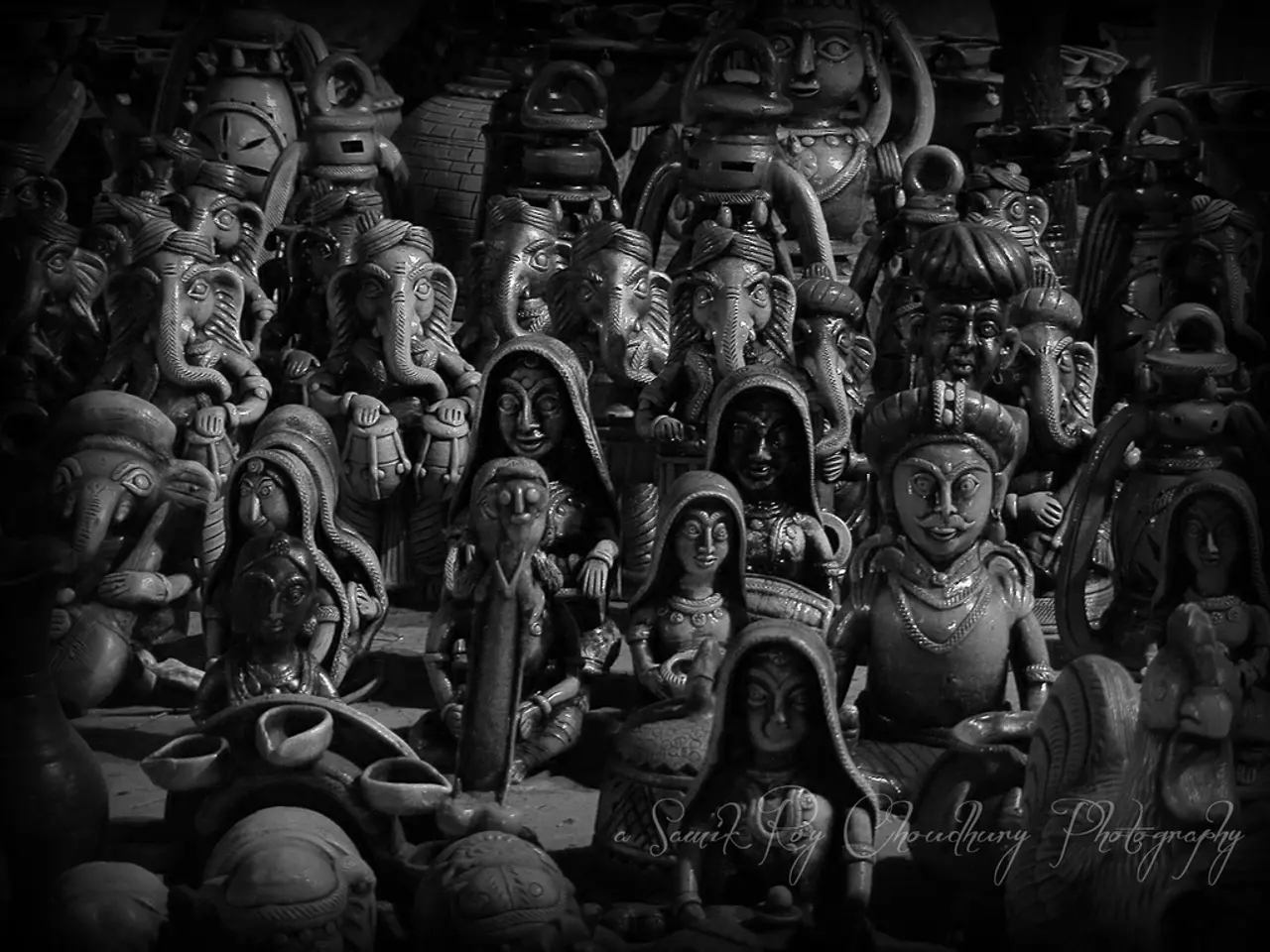Teej Festival Explanation: A Comprehensive Look at Its Significance
Teej, a significant Hindu festival primarily celebrated by women in India and Nepal, is a colourful celebration of feminine energy, community bonding, and the divine union of Lord Shiva and Goddess Parvati. This festival, steeped in historical and cultural significance, symbolizes devotion, marital love, and the longevity of spouses.
Teej commemorates the intense penance and fasting of Goddess Parvati, who is said to have performed 108 times to win Lord Shiva as her husband. The festival is observed on the third day after the new moon in the month of Shravan (July-August), coinciding with the monsoon season.
Culturally, Teej holds great significance in northern India and Nepal, where it is celebrated with fasting, folk songs, dance, and vibrant social gatherings. Women adorn themselves in red and green clothing, apply henna, and swing on decorated swings, fostering community bonds and cultural continuity. In Rajasthan, unique rituals such as the procession of Mata Parvati and historical legends tied to bravery and protection of women are also part of the celebration.
In Nepal, Teej (Hartalika Teej) is one of the most prominent women’s festivals, emphasizing devotion to Shiva-Parvati and reflecting a shared cultural heritage with India. The Nepali ambassador has highlighted that this festival symbolizes the deep cultural connections across the two countries, linked also by their mutual reverence for Shiva residing in the Himalayas.
Teej is more than just a festival; it's a spiritual journey, a cultural statement, and an emotional celebration. During Teej, women perform a morning Puja, observe a strict nirjala vrat (fast without water), and exchange "Sindhara"-a gift hamper of sweets, clothes, and cosmetics-from their parents' home.
The series of Teej festivals typically includes Hariyali Teej, Kajari Teej, and Hartalika Teej. Hariyali Teej, celebrated in the month of Shravan, is associated with the blooming of nature after the dry summer, and swinging on decorated jhoolas is a common tradition. Kajari Teej is celebrated about 15 days after Hariyali Teej, mainly in Uttar Pradesh and Bihar, and is closely linked to the health and prosperity of one's husband.
Teej serves as a celebration of feminine strength and resilience, offers a platform for women’s voices and cultural expression, encourages the preservation of folk art, customs, and oral histories, and acts as a reminder to cherish relationships, values, and nature in a rapidly changing world. It brings generations of women together in a beautiful blend of devotion and joy, while also honouring tradition and celebrating feminine strength.
For unmarried girls, Teej holds the hope of finding a loving and caring life partner. Married women fast and worship Shiva and Parvati for the long life and well-being of their husbands, reinforcing family ties and spiritual dedication.
In agrarian societies, Teej symbolizes gratitude for nature, hope for a good harvest, and the beginning of a new cycle of life. As the world evolves, Teej remains a beacon of tradition, cultural heritage, and the power of women's devotion and resilience.
- Social media platforms are bustling with vibrant updates and photos during Teej, showcasing the colorful celebrations, cultural heritage, and feminine energy that the festival symbolizes.
- As both a spiritual and emotional journey, Teej fosters not only devotion to the deities Shiva and Parvati but also prioritizes health-and-wellness, with the observance of strict fasts and Puja rituals.
- In today's interconnected world, the cultural-travel enthusiast will find great interest in the various Teej festivals, each with its unique traditions, such as the swinging on jhoolas during Hariyali Teej and the procession of Mata Parvati in Rajasthan.
- Given the importance of relationships and community bonding in Teej celebrations, the festival is also an excellent platform for exploring and understanding the dynamics of relationships throughout history and around the world.
- Trendsetting women, with a passion for fashion-and-beauty, enjoy the opportunity to display their personal style alongside traditional red and green clothing during Teej festivities, blending the modern and traditional aspects of womens-health and lifestyle in a beautiful consciousness.




